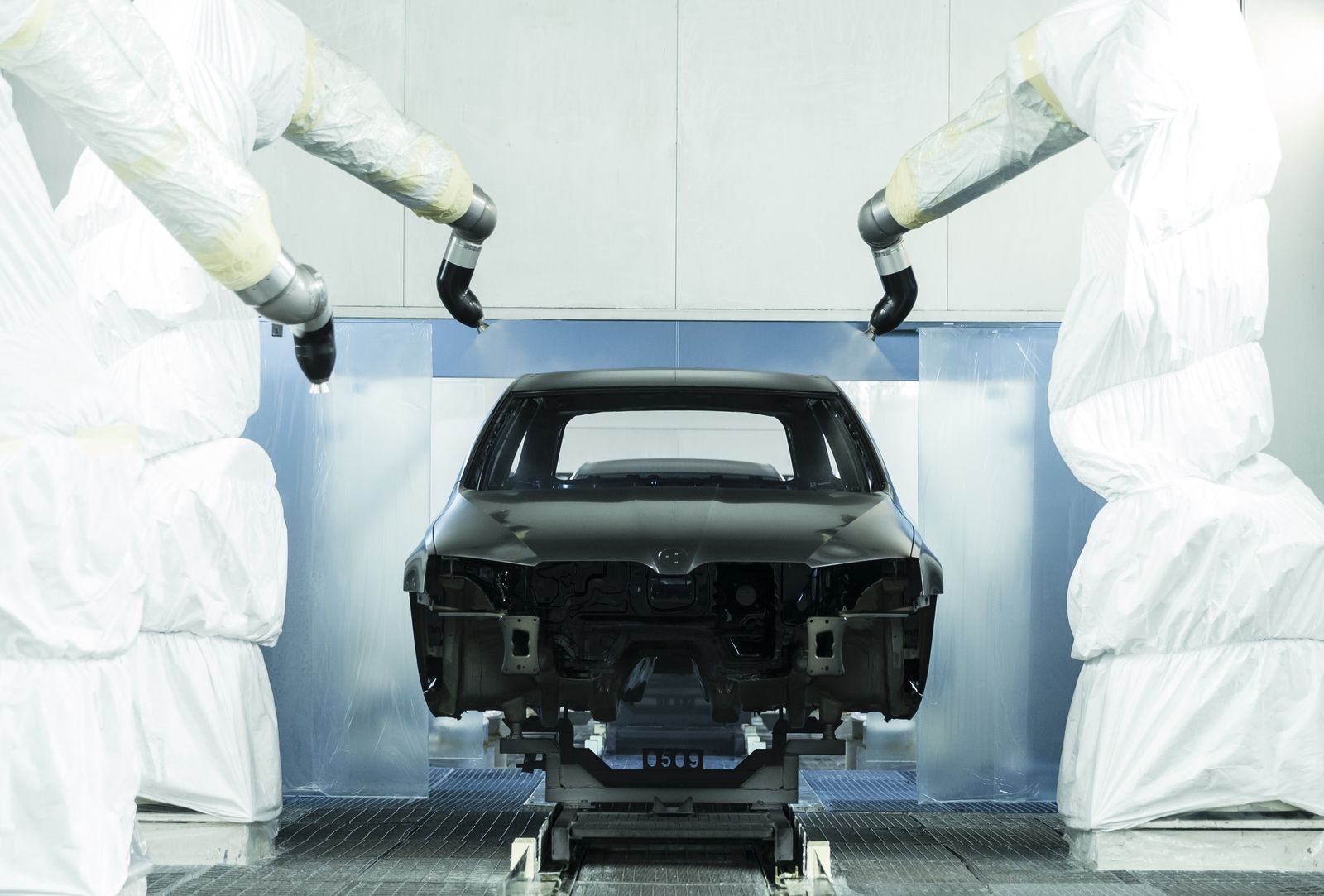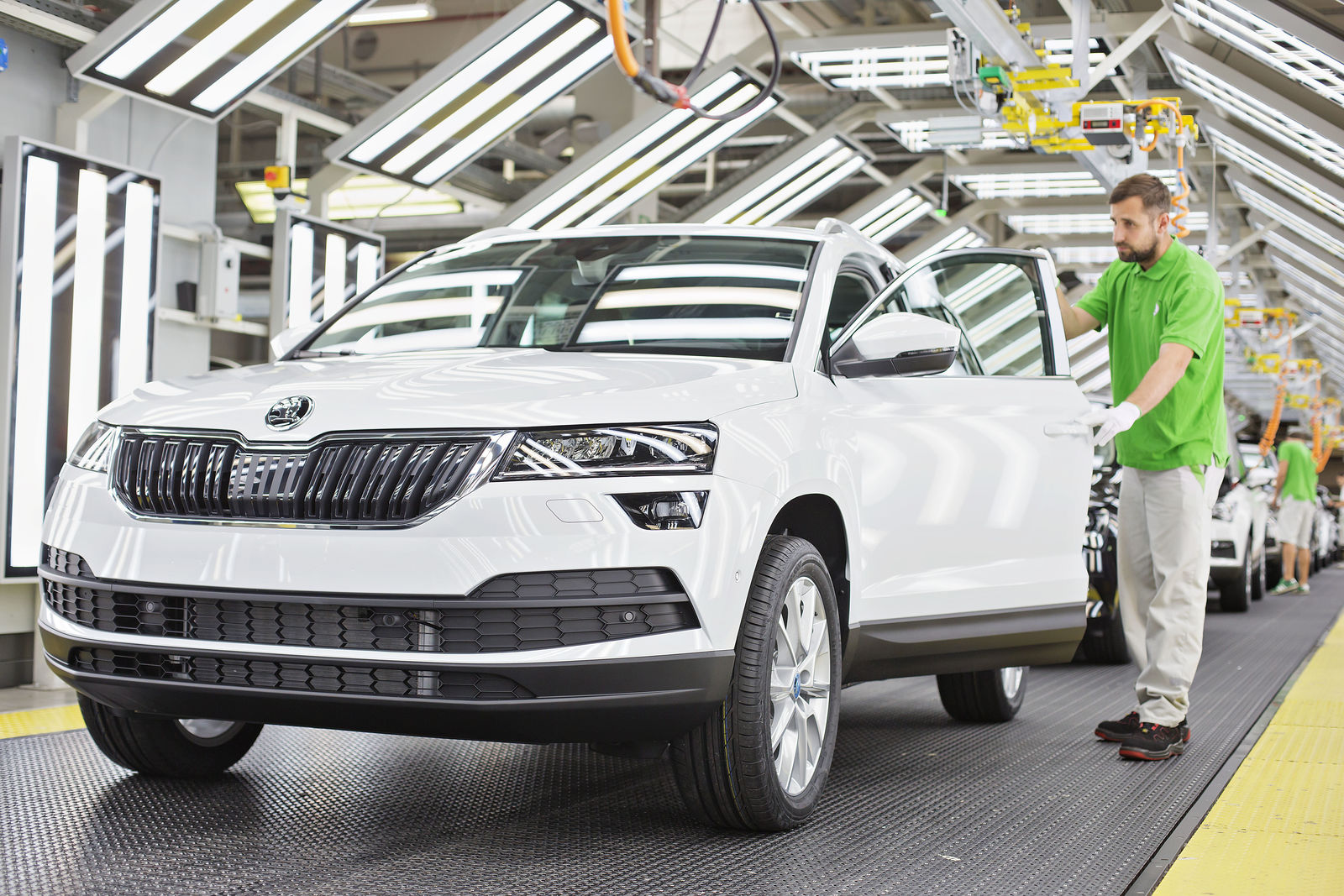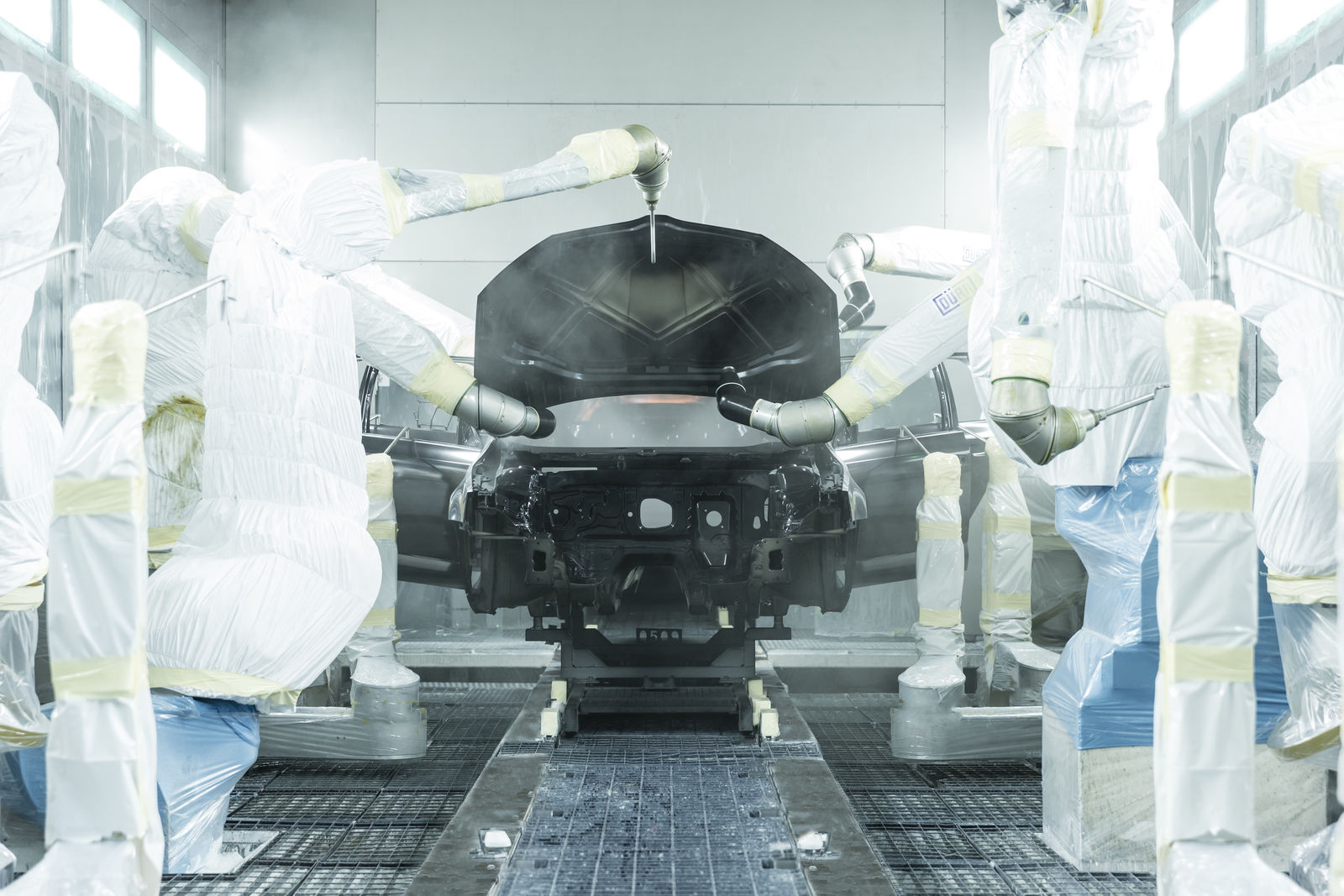ŠKODA automobiles unite tradition with technology, and the brand is enjoying increasing popularity that extends far beyond the borders of its Czech origin. Together with B&R, the company achieved a substantial boost in productivity at its headquarters near Prague in the city of Mladá Boleslav.

ŠKODA's story began in December of 1895, when two cycling enthusiasts – mechanic Václav Laurin and bookseller Václav Klement – founded a small bicycle production shop named Laurin & Klement. Four years later, they began building motorcycles as well, under the brand Slavia, making them the first motorcycle factory in Central Europe.
By 1905, Laurin and Klement were manufacturing automobiles, achieving immediate success with its first model, the Voiturette A. In 1924, the company joined up with machine builder Škoda. Since 1991, Škoda has been part of the Volkswagen Group.
Eliminate faults, increase productivity
Škoda production has a strong emphasis on automation and robotics. To further increase output, the company was looking for a technology that would allow early detection of potential faults in order to prevent the high cost of unexpected downtime. Automation specialist B&R had what they were looking for.
"The paint shop is one of the most important parts of an automobile factory," says paint shop maintenance coordinator Marek Melčák. "It is a key step in the production process due to the potential for bottlenecks. Since 1996, we've been continually increasing our capacity through the use of the latest technology. Instead of of manual spray guns, the paint is now applied by robots – currently 184 of them. Great care also goes into the control of the transport belts. Every minute that a belt is stopped comes at a high cost."
The paint shop's pretreatment line is 250 meters long. At a speed of 11 meters per minute, one chassis leaves the line every 37 seconds – around the clock, 24-hours a day. The sprockets are a critical element of the conveyor system, so it is important that they are monitored to ensure the pretreatment line stays up and running. That's why Škoda was looking for a partner with special expertise in the conveyor belt monitoring. The contract went to DIF from Bohumín, Czech Republic, a specialist in optical measurement systems and vibration diagnostics.

Paint shop condition monitoring
DIF presented a solution using B&R's APROL ConMon solution, based on the existing technology. The communication system would connect to the paint shop's existing network. Diagnostics data could therefore be exchanged between the X20 controller and the Automation PC 900 industrial PC without needing an extra network, as would have been required by other bidders. Another key requirement was the number of secure IP addresses. With the B&R solution, only one IP address would be needed to exchange data between the PC and controller for 100 measurement points. The control system communicates between diagnostics stations via real-time Ethernet POWERLINK. In comparison, other proposed solutions would have required one IP address for every four measurement points. These and other factors convinced ŠKODA that they had found the right partner in B&R.
To meet the requirements defined by the pain shop specialists, DIF developed a solution centered around conveyor belt monitoring. "It was no easy task," recalls DIF Managing Director Radim Falc. "When a sprocket is rotating slowly – in this case 23 seconds per rotation – it is difficult to diagnose. We could never have completed such an extensive project without the meticulous work and experience of our maintenance technicians."
The overall solution was developed in collaboration between Škoda, DIF and B&R. "We had a good experience with B&R a number of years ago developing vibration diagnostics for industrial ventilation and conveyor systems. Here at the Škoda plant, we use B&R's APROL system for factory automation. At the paint shop, the APROL ConMon solution is used for online vibration diagnostics. This enabled us to improve product quality, increase system availability and significantly reduce our maintenance costs," says Falc.
A total of 366 vibration sensors (accelerometers) are mounted throughout the production line, each measuring 16 vibration parameters. The data is sent to an Automation PC 900 via POWERLINK. This allows faults to be prevented in the harsh conditions of the paint shop. "The system works on the assumption that the early stages of bearing damage result in an increase in vibration energy at the higher frequencies," explains Falc. "This method also works to detect lubrication problems or jammed components." The information gained from this process is stored permanently and evaluated.

B&R developed solution for online diagnostics
Both the hardware and software technology for online diagnostics were developed by B&R. B&R engineers adapted the software to the diagnostics system, relying on know-how from DIF. "The greatest advantage was that we were able to use the existing paint shop network and didn't need to implement a whole new network between the Industrial PCs and the measurement stations on the painting lines," says Radim Křístek from B&R's Ostrava office, who was also involved in the project.
"An added benefit of our approach is that the system can be expanded modularly. That means you can start a pilot project with ten measurement points and easily scale it up to a hundred," says Václav Pravda, branch office manager at B&R Prague.
New project with B&R already in planning
After a year of condition monitoring, Škoda is clearly satisfied with the results at its Mladá Boleslav plant. "Thanks to this project, the sprockets in our paint shop are working perfectly, without a single fault. The investment has already paid off through a significant increase in production capacity. We've gone from 2,180 autobodies per day to 2,200. So we're already planning to implement early-warning diagnostics for our ventillation system as well," says Melčák.
Marek Melčák Paint Shop Maintenance Coordinator, ŠKODA "The investment in condition monitoring has already paid off through a significant increase in production capacity and zero unscheduled downtime." |